As soon as the Smithsonian Faculty Fellowship cohort arrived at the Donald W. Reynolds Center…
Well, any hopes of escaping the spring break crowds were dashed as soon as the fellows arrived at The Smithsonian’s National Air and Space Museum on Thursday, April 4th. Fortunately, the collective efforts of co-coordinators, Smithsonian liaisons, and even a gritty fellow or two soon brought the 2024 SFF cohort into the recently reimagined museum. While the museum is still in the midst of a massive multi-year renovation project, eight of 23 exhibitions are currently on display, and we had the pleasure of “orbiting” two of them: Destination Moon and Kenneth C. Griffin Exploring the Planets Gallery.

Before we were invited to tour, though, we met with Shannon Baldioli, an Educator Engagement Specialist at the NASM. Using a series of Project Zero Thinking Routines, courtesy of Harvard University, Baldioli invited us on an intergalactic journey: “The Final Frontier: The Complexities of Space Exploration,” as her presentation was so aptly named. At the start, Baldioli underscored how necessary renovations to the NASM’s exterior created opportunity for museum educators to revisit, revise, and reinterpret the interior. In 2016, “Revitalization” emerged as the theme for the building’s rehab while “Transformation” became the mantra for exhibit and gallery storytelling. Baldioli did not mince words either, recognizing that much of the history on display for decades captured the efforts of white men glorified by more white men. Helping to tell the stories of those blanketed in shadow proved especially challenging, too—a topic readdressed by Dr. Cathy Lewis and Mike Hulslander later in the day.
To ensure our ultimate exhibit visits were rich with purpose, Baldioli began a Chalk Talk activity, inviting all fellows to respond to the question: “Should we explore space?” Excited by the question and ready to demonstrate our collective brilliance, we decorated an oversized paper that had been taped to the wall with our responses.
Take a look at our handiwork: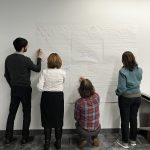
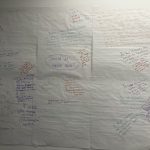
We learned coming to consensus in answer to this question was not our primary objective. Instead, Baldioli wanted us to treat our respective responses as a jumping off point, as a mission to take with us as we investigated Destination Moon and Kenneth C. Griffin Exploring the Planets Gallery. Could the artifacts and stories we discover enrich our thoughts? Could we find evidence in defense of our claim? Was our little answer actually captured in exhibit text? Answers to these follow-up questions were not so easy to find in either immersive exhibit.
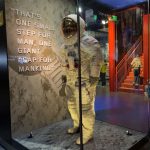 Most of us started in Destination Moon, a sprawling two-level space filled to the brim with engines, spacesuits, the Apollo 11 Command Module Columbia, and so much more! You can explore 161 of the exhibit’s artifacts virtually, too! While it felt like a playground, I did my best to stay committed to my mission: Find evidence in support of my claim. If I’m honest with myself, though, I was happily distracted. Professor Evan Crump was practically racing from artifact to artifact, prepared to share his knowledge of the space program and his science-fiction genius with me and other fellows. Similarly, I was touching every tactile interactive, including what I later learned was Dr. Lewis’s favorite element of the exhibit: space gloves! Actually, her description was much more intelligent, including how the four touchable gloves showcase the stages of the glove dip process—from hand cast to rubber mold to additional layers of material. You can learn more in “Hands and Gloves in Space,” if interested!
Most of us started in Destination Moon, a sprawling two-level space filled to the brim with engines, spacesuits, the Apollo 11 Command Module Columbia, and so much more! You can explore 161 of the exhibit’s artifacts virtually, too! While it felt like a playground, I did my best to stay committed to my mission: Find evidence in support of my claim. If I’m honest with myself, though, I was happily distracted. Professor Evan Crump was practically racing from artifact to artifact, prepared to share his knowledge of the space program and his science-fiction genius with me and other fellows. Similarly, I was touching every tactile interactive, including what I later learned was Dr. Lewis’s favorite element of the exhibit: space gloves! Actually, her description was much more intelligent, including how the four touchable gloves showcase the stages of the glove dip process—from hand cast to rubber mold to additional layers of material. You can learn more in “Hands and Gloves in Space,” if interested!
I was most struck by “Apollo in America,” a video collage that portrays events spanning 1961-1969, beginning with President Kennedy’s speech before Congress and concluding with the moon landing. These bookends, while monumental in and of themselves, fail to capture the emotion of the viewing experience. As the astronauts disembark on the moon’s surface on one screen, another captures archival footage of newscasters, and another displays the joy and wonder of public viewing parties. Shown side-by-side and then further emphasized by heroic music blasting from a clever speaker system, the experience becomes an awe-inspiring spectacle. Personally, I felt transported. The pride so deeply felt in 1969 was tangibly shared with an audience of modern museum visitors.
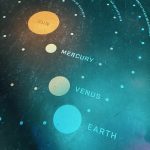 The captivating wonder of Destination Moon is possibly eclipsed in Exploring the Planets, another massive exhibit landscape so rich with content it’s easy to miss all that it has to offer. Fortunately, a couple of fellows helped point out its treasures. Professor Ted Shusterman invited me to look at the floor, which featured outlines of the planets distanced according to scale throughout the exhibit. Professor Crump helped me find models of the Mars Curiosity and other vehicles. On my own, too, I found more interactives, including a video tower designed to help visitors learn more about careers in planetary exploration.
The captivating wonder of Destination Moon is possibly eclipsed in Exploring the Planets, another massive exhibit landscape so rich with content it’s easy to miss all that it has to offer. Fortunately, a couple of fellows helped point out its treasures. Professor Ted Shusterman invited me to look at the floor, which featured outlines of the planets distanced according to scale throughout the exhibit. Professor Crump helped me find models of the Mars Curiosity and other vehicles. On my own, too, I found more interactives, including a video tower designed to help visitors learn more about careers in planetary exploration.
Shusterman, perhaps, outdid us all, for his enthusiastic journey not only included a stop at the museum gift shop to secure an Astronaut Ice Cream Sandwich for his wife but also the following gems: “A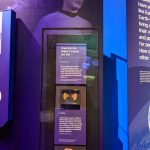 replica of Spock’s ears from the original Star Trek Series, representative of one concept of how an alien life form may look (I’m a huge Star Trek the Next Generation fan), as well as a replica of the golden record included on the Voyager 1 probe, conceived by Carl Sagan. In addition to basic information about life on our planet, the golden record contained recordings of music representative of many cultures, not just Western, European classical music.”
replica of Spock’s ears from the original Star Trek Series, representative of one concept of how an alien life form may look (I’m a huge Star Trek the Next Generation fan), as well as a replica of the golden record included on the Voyager 1 probe, conceived by Carl Sagan. In addition to basic information about life on our planet, the golden record contained recordings of music representative of many cultures, not just Western, European classical music.”
Even with all the fascinating artifacts to marvel over, I’ll admit to being distracted by another goal. Baldioli’s statement about race and diversity compelled me to search for content relevant to pioneers of color. With more effortful focus, I discovered several stories; however, the fellows and I soon learned that many of those stories are unfortunately, irrevocably incomplete.
When we returned to our classroom to share out about our exhibit experiences, Baldioli embraced her role as an audience advocate. In exhibit design projects, she—like many others we have met across the Smithsonian Institute—helps to identify the most relevant and interesting stories to share with modern audiences. For Baldioli and the extensive NASM education and curation teams, amplifying diversity and accessibility are central goals. Some of this robust work can be winnowed down, in fact, to the significance of word choice. For example, “hatch,” while the technically accurate word for a spaceship door, may be understood as “hatch,” the verb associated with animals and eggs.
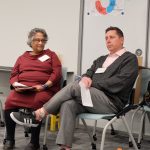
These granular focal points inspired the discussion to follow in Dr. Cathy Lewis and Mike Hulslander’s informal chat. Lewis, an expert in international space programs and spacesuits, explained her responsibilities include exhibit development, research and publication, object collection, and public service. Similarly, Hulslander, is a science content expert who serves on most of the NASM’s exhibits’ education committees. Together, they tag-teamed a series of questions designed to help us appreciate the behind-the-scenes labor that goes into exhibition development, design, and revision. Both were surprisingly candid about that work, too. Mistakes of the past, racist collection practices, the 70% left on the cutting room floor, the exhibit’s elevator pitch—no topic seemed off-base as Lewis and Hulslander traded insights informed by years of experience.
Admittedly, it would be a disservice to try to capture every valuable point shared by our guides. It was fascinating to learn the following, though:
- The median average age for the NASM’s audience is 36-years-old. As a result, the redesign efforts attempt to reach a younger audience potentially unfamiliar with the 1960s. In Destination Moon, for example, the curators added pre-flight space toys, established more context for the culture of the 1960s, and included the film sequence of the moon landing.
- To better match the lived experiences of modern visitors, new stories of diversity were shared as well. This proved to be an especially challenging prospect because, as Lewis explained, there was zero effort to collect the objects relevant to those who were behind-the-scenes. This shocking truth ultimately answered one of the questions that troubled me post-visit: “Why could I find pictures of and stories about people of color in the exhibits but not their artifacts?” Artifacts of their struggles, scholarship, and accomplishments can simply not be recovered and displayed.
- Mechanical interactives, audio-visual interactives, and tactile interactives—basically, every item I found myself manhandling in each exhibit space—are very expensive. Development and upkeep are significant in terms of cost, but younger audiences love them, so the museum and its sponsors will pay for them.
This final insight spoke to a question posed by one of the fellows earlier in the day. Prior to our chat with Lewis and Hulslander, Professor Serena Gould drew attention to the potential for audience apathy at the NASM, which she linked to different perspectives of space exploration between generations. I was embarrassed to find myself nodding along in recognition of my own apathy here. Space—outside of the canonical Alien movie series—has never been a source of fascination. As an ‘80s baby, too, I never participated in the distinctly American pride that comes from our interplanetary achievements. Baldioli, Lewis, and Hulslander make it clear, though, that their redesign efforts are broadly impactful, capable of reminding older audiences of past triumphs, ensuring younger audiences appreciate their significance, helping others see themselves in space-relevant contexts, and inviting all to grapple with the successes and lost opportunities of museum education centered on space travel.
To learn more about our visit, please explore Philippa Rappoport’s Smithsonian Learning Lab collection, which serves as the fellows’ introduction to both Destination Moon and Kenneth C. Griffin Exploring the Planets Gallery: https://learninglab.si.edu/collections/2024-smithsonian-montgomery-college-faculty-fellowship-program-national-air-and-space-museum/0IYrDKpnBNtvqclj.
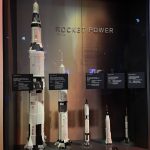
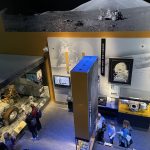

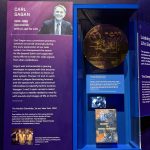
Photos by Denise Dewhurst
Photos by Matt Decker
Photos by Teresa Lew
Photos by Ted Shusterman


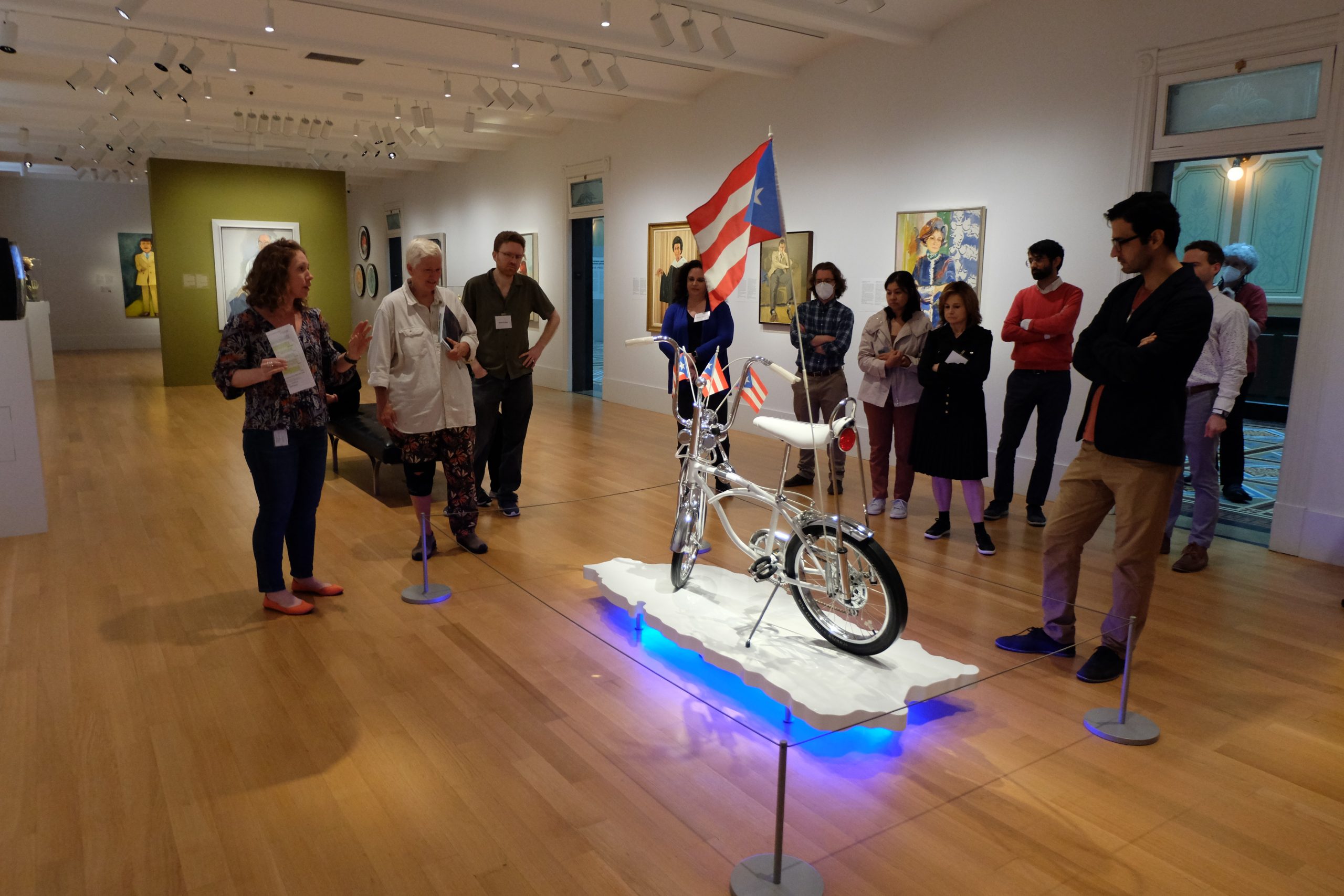
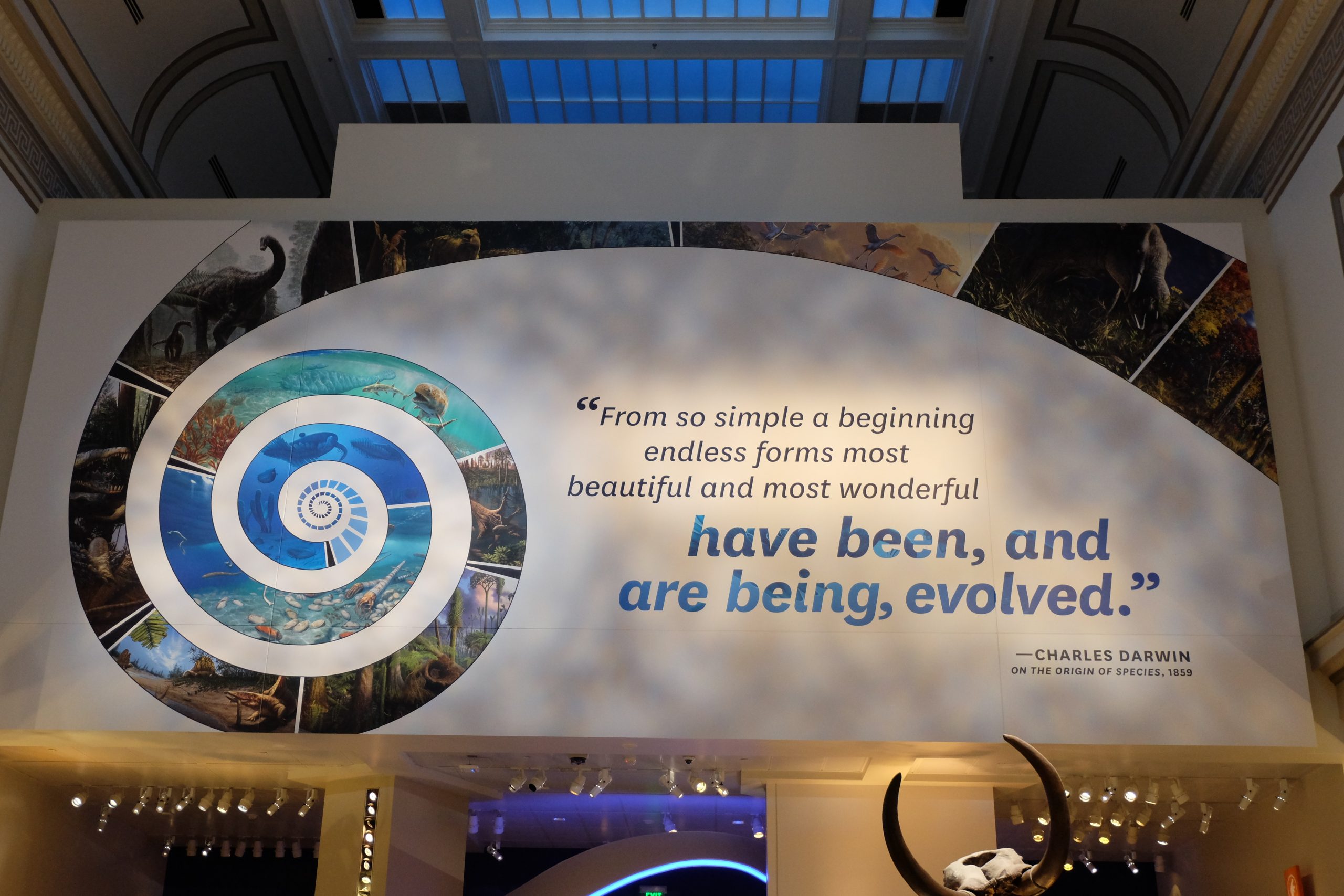
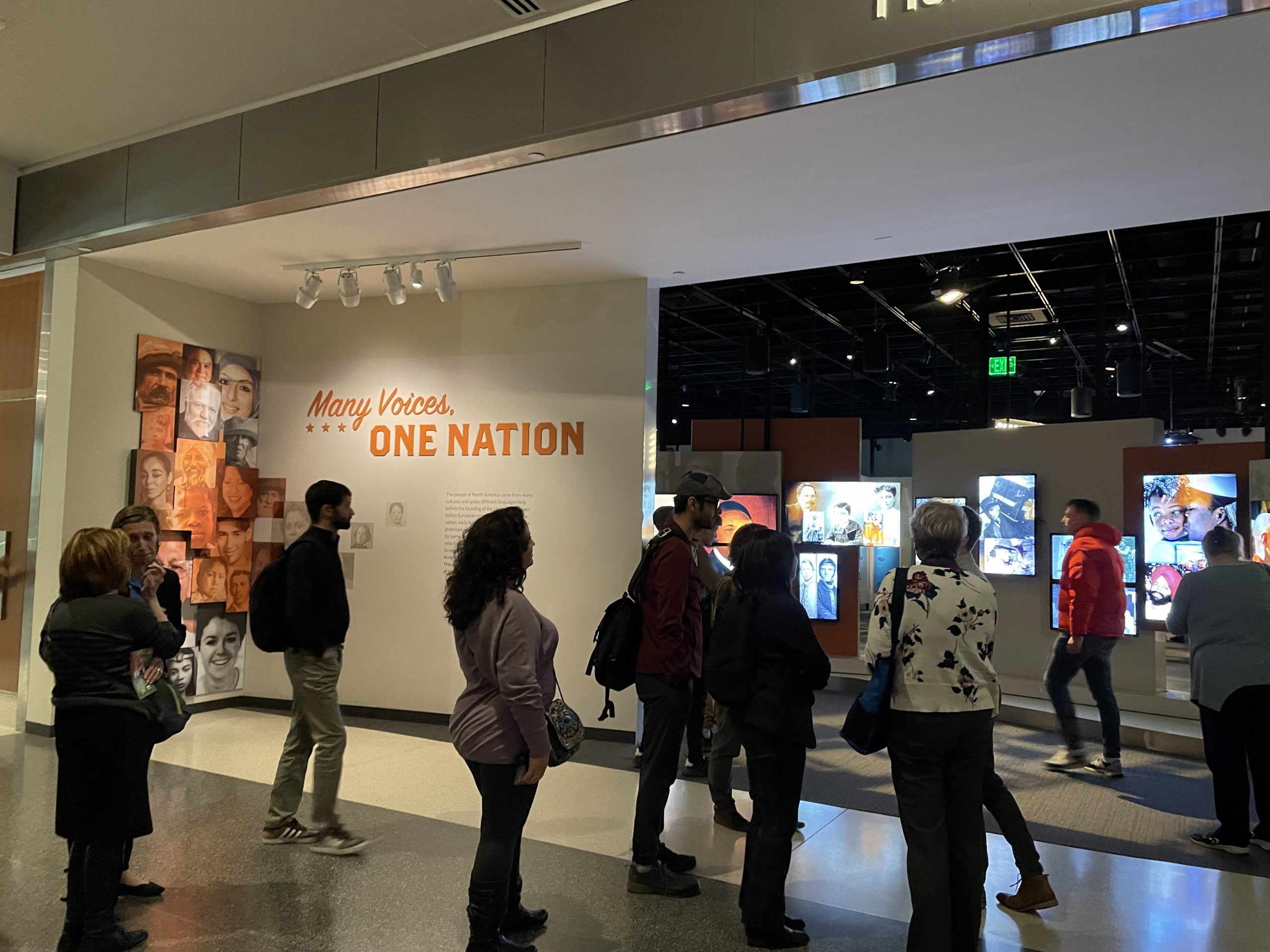
This Post Has 0 Comments